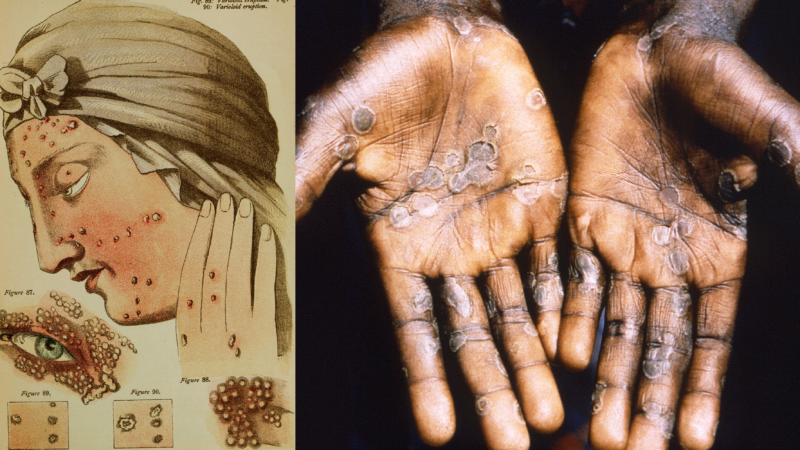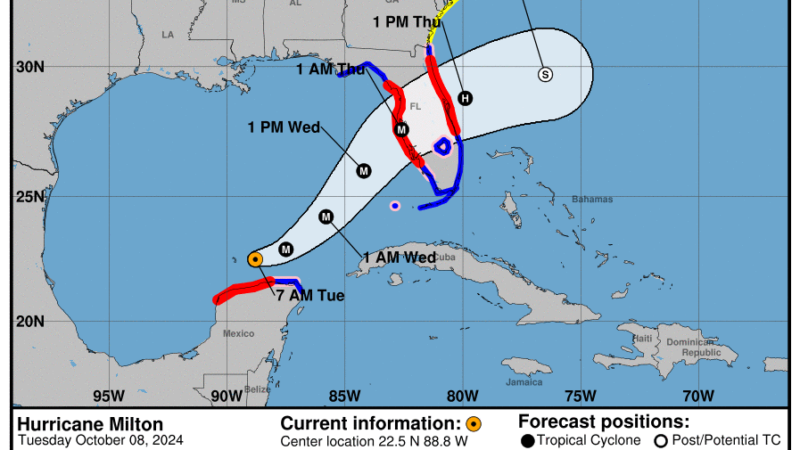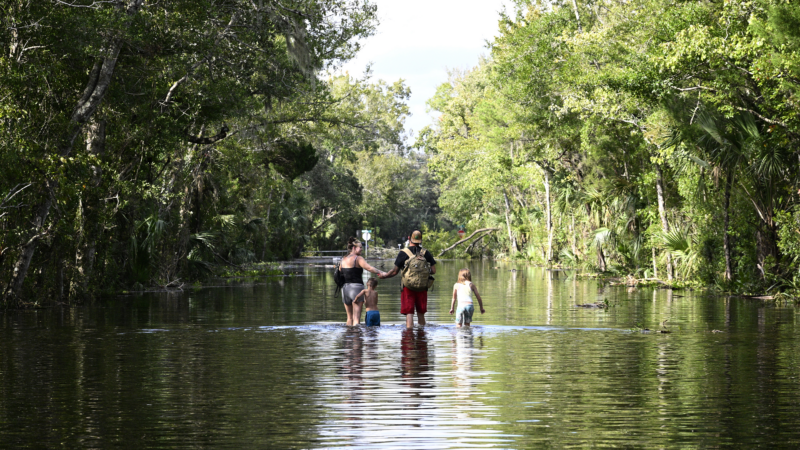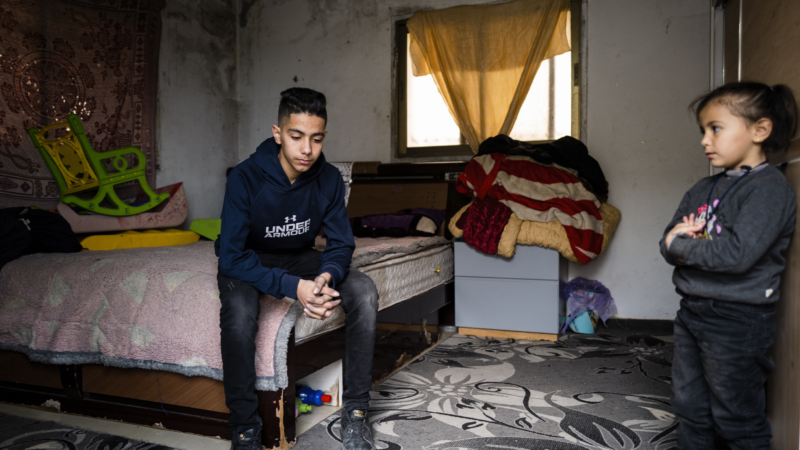The end of smallpox was … the beginning for mpox
It all started with an unremarkable trip to grandma’s house in 1970. But two days into the visit, something went terribly wrong.
The 9-month-old grandson fell ill. First, a fever. Then, a nasty rash. Alarmed doctors suspected smallpox but, instead, they soon discovered something even more bewildering: The first-known human case of monkeypox, now called mpox. The child was patient zero.
Today, more than 50 years after that case in a remote corner of the Democratic Republic of Congo, that same virus is sending public health experts scrambling. So far this year, there have been more than 30,000 suspected mpox cases in 15 African countries — dwarfing previous yearly totals. The surge is prompting some to revisit mpox’s history.
“Monkeypox was detected in 1970 and now it is blowing out of proportion in 2024, what happened along the way?” asked Ugandan health minister Jane Ruth Aceng at a regional World Health Organization meeting in Brazzaville in the Republic of Congo in August.
Looking back, researchers now see that the origins of mpox are inextricably intertwined with the fight against smallpox.
“We vaccinated for smallpox and eradicated it. But look, something came out of that: monkeypox,” said Aceng.
Smallpox and mpox are so closely related that immunity to one helps fight off the other. When smallpox vaccinations were terminated, the world’s immunity to mpox evaporated, and the medical training needed to combat a pox virus started to dissipate too.
This is a story about unintended consequences, and how triumphing over smallpox accidentally created an opening for mpox. Experts say examining the history of mpox carries valuable lessons about how the virus has changed, how our medical toolbox has changed — and what people might do to regain the upper hand over the virus.
How eradicating smallpox paved the way
Doctors don’t know how the grandson contracted mpox on that ill-fated trip to his grandma’s house. And even though his grandma lived about a week’s journey from the DRC’s capital, the boy’s doctors made sure crusts from the little boy’s sores were sent to Moscow for analysis. That’s where the mpox diagnosis was made; the virus has been known since 1958 but had previously only been thought to infect monkeys.
The grandson’s rash attracted global attention because, at that moment in time humanity was closing in on a major accomplishment: The eradication of smallpox, a virus that had killed hundreds of millions in the 20th century alone.

“It’s one of humanity’s greatest triumphs,” says Dr. William Moss, an epidemiologist and international health expert at the Johns Hopkins Bloomberg School of Public Health.
In order to prove that smallpox was really, truly gone, scientists needed to investigate every rash that looked like smallpox.
Moss says it was only because of this “very intensive surveillance” for smallpox that the boy’s case of mpox was identified. The same was true for the other cases of mpox that soon started to trickle in. By 1978, there were a total of 36 documented monkeypox cases in humans.
At the time, the exact source of the virus stumped scientists: Was it from contact with monkeys? Or perhaps another forest animal? What scientists did know was that mpox is biologically related to smallpox; they’re in the same family of viruses.
Case investigators studying the suspicious rashes quickly realized that those who got mpox had not been vaccinated against smallpox. For example, the 9-month-old was the only one in his family not vaccinated against smallpox and the only one to get monkeypox. He hadn’t been born yet when a mobile smallpox vaccination team rolled through town a year earlier.
Public health experts soon realized that in a world without smallpox infections and vaccinations, nobody would have immunity against mpox. Before stopping smallpox vaccinations, they weighed this risk.
“The overall recommendation was that [smallpox] vaccination was not needed [to protect against mpox],” says Anne Rimoin, a professor of epidemiology at the UCLA Fielding School of Public Health and a leading mpox researcher.
For one thing, they didn’t see mpox as a big threat. “The potential for human-to-human transmission was low,” says Rimoin. Researchers surmised that mpox came from contact with forest animals “and the overall outlook – in those days – was that with urbanization the chances of exposure to wild animals would be lower,” she says.
In addition, the smallpox vaccine was far from ideal. “People could die from the smallpox vaccine,” says Moss, noting that it contained a live virus and wasn’t suitable for those with weakened immune systems.
In a case report from 1978, the WHO concluded: “Evidence is that this [mpox] rare and sporadic disease is not highly transmissible and does not appear to be a public health problem.”
And so, smallpox vaccinations were stopped. In the DRC, they ended in the early 1980s. And a generation of children vulnerable to mpox came into the world.
How mpox — and medical care — changed OR Three major mpox changes
Fast forward to 2022, and then again to 2024, and the WHO declared mpox a “public health emergency of international concern,” its highest level of alarm.
“No good deed goes unpunished, right?” says Rimoin.
She published a study in PNAS in 2010 documenting how mpox cases have “dramatically increased” as immunity from smallpox has waned. And many experts believe the lack of smallpox immunity is one reason that the majority of cases — and deaths — in the current outbreak are in children who were too young to have smallpox immunity.

Yet, Rimoin thinks the edict to stop smallpox vaccinations was “absolutely” the right choice. “You can put those resources towards other vaccines, other health problems. Cross [smallpox] off your list, move on to something else,” she says.
Others agree. “It was definitely the right decision,” says Dr. Mitch Wolfe, former chief medical officer of the U.S. Centers for Disease Control and Prevention.
But, Rimoin acknowledges, the world is now paying the consequences for that decision.
In addition to the global loss of immunity, there are three big ways the mpox landscape has shifted since the time mpox was discovered — and largely dismissed.
First, the virus itself has changed.
Just about every piece of the WHO’s 1978 assessment that mpox is a “rare and sporadic disease [that] is not highly transmissible” is no longer true.
Traditionally, a person got mpox after handling infected wild animals, often little rodents. Today, it spreads readily from one person to the next, often through close contact — like, say, sharing linens within a family — or through sexual contact. This means the virus can spread much further and faster than before.
The idea that urbanization would reduce wildlife interactions and therefore squash this virus is now proven preposterous. To the contrary, the DRC’s Ministry of Health has reported more than 500 cases in the capital of Kinshasa. “That is something that worries us very much,” says Dr. Ngashi Ngongo, chief of staff at the Africa Centers for Disease Control and Prevention, pointing out that Kinshasa is a big and overcrowded city. “That makes it very prone for rapid expansion.”
The second big change? Key medical skills have been lost.
When the smallpox eradication campaign was in full swing, not only were vaccines reaching the most remote corners of the world but staff all over the globe were trained to give the vaccines, detect the rash and collect samples for analysis. Now, those skills have waned.
Barely an mpox discussion goes by without experts lamenting the lack of high-quality data. Remember the 9-month-old’s scabs that were sent from deep in the DRC rainforest to Moscow for testing? That type of maneuver is now proving very challenging.
“Most of the people that collected these specimens have not been trained to understand what is a quality specimen,” says Dr. Jean Kaseya, the director general of Africa CDC. He says specimen collection and correct storage during transportation are proving to be major challenges.
Similarly, vaccination skills have been lost. Many of the mpox vaccines were first developed for smallpox. And most smallpox vaccinations were done with a special needle that scrapes the skin, leaving that famous scar on the upper arm. That’s the same technique used for the Japanese mpox vaccine, which is the only vaccine currently approved for kids in the DRC. One of the hurdles to rolling out that vaccine in the DRC is that it will require a major training effort.
“That’s quite a skilled technique, and [teaching that skill] will take time. [It] hasn’t been used in vaccination programs for decades now,” says Dr. Mike Ryan, who runs WHO’s Health Emergencies Program.
And, a final way things have changed: The world’s appetite for cooperation has shrunk.
The international collaboration that was present during the smallpox eradication campaign is “almost unimaginable right now,” says Moss of Johns Hopkins. It took coordination across war zones and political differences.
While the current mpox outbreak in Africa has garnered major donations from the U.S. to Europe to Japan, many argue that a lack of collaboration is, at least partly, to blame for setting the current outbreak in motion.
“We are talking with our partners, with our colleagues from Western countries, and we are telling them, they are also responsible for the situation that’s happening in Africa,” says Africa CDC’s Kaseya.
He says during the 2022 mpox outbreak, the world was only concerned with the strain of mpox circulating in Europe and the U.S. When it came to the strain in Central Africa, “they didn’t conduct studies. They didn’t conduct research…Eighty percent of the unknowns [about the current outbreak] are because our colleagues and partners didn’t want to see the reality that was going on,” he says.
“We are not blaming them, but we are telling them the truth,” Kaseya says.
Is it time to revive the smallpox vaccine?
A lot has changed since the fateful decision to stop vaccinating for smallpox — and by extension mpox. Rick Bright believes it is a good time to reconsider that decision.
Bright, who used to lead the U.S. Center for the Biomedical Advanced Research and Development Authority, says he’d like to see a discussion about whether to “begin, once again, vaccinating the population, the global population, with the vaccine to make sure that we are all protected from mpox and smallpox and other derivatives that we might see.”
Bright points out that, in the intervening decades, the smallpox and mpox vaccines have become a lot safer. And the mpox virus has certainly proven its ability to evolve and spread widely.
However, he’s quick to admit, any mass vaccination effort would not happen immediately. Right now, there aren’t enough mpox vaccine doses to address the current mpox outbreak, let alone add it to the routine vaccination list.
Moss, of Johns Hopkins, isn’t so sure mass vaccination is the way to go since mpox has not spread widely in the general population. “I still see it as more targeted, whether it’s a high risk population or spatially,” he says. That’s the approach the DRC has taken, focusing on hotspots as well as populations that are most at risk, like children, health care workers and sex workers.
What they agree on is that there needs to significantly more vaccine production and availability — and a broader discussion about what protection from pox viruses is needed.
A jellyfish with a superpower – it can fuse with another and become one
Researchers found that two individuals of a type of comb jelly can fuse and become one with a shared nervous system and digestive system — which has implications for animal regeneration and immune systems.
More than a dozen states sue TikTok, alleging it harms kids and is designed to addict them
Lawsuits filed by more than a dozen state attorneys general argue that TikTok knowingly exacerbates the youth mental health crisis and places profits over child safety.
How to follow the latest local updates on Hurricane Milton
As of Tuesday morning, Hurricane Milton was just over 500 miles southwest of Tampa, Fla, and expected to make landfall late Wednesday night.
Are hurricanes getting worse? Here’s what you need to know
Climate change hasn't increased the total number of hurricanes hitting the U.S., but it is making dangerous storms more common.
Fact-checking lies about FEMA funding. And, turn climate anxiety into action
Former President Donald Trump has made several claims about FEMA's disaster response. NPR has fact-checked them ahead of Hurricane Milton. And, how you can turn climate anxiety into collective action.
One boy’s story shows the impact of rising Israeli settler violence in the West Bank
After his father was killed by Israeli settlers raiding his village in the central West Bank, he says, 15-year-old Noor Assi sometimes envies other teens, but says, "I have a family to take care of."







